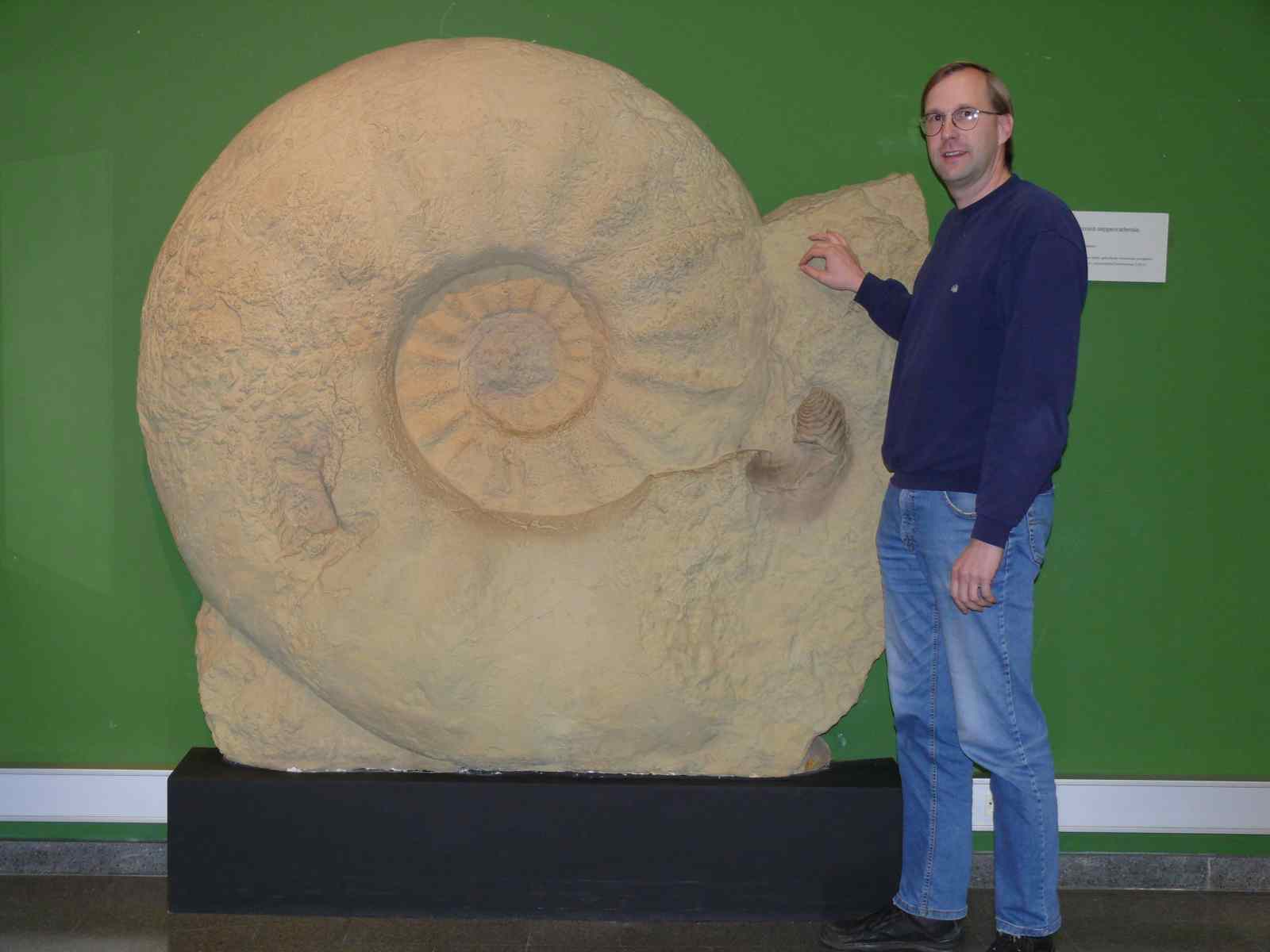Ammonites the size of an adult human were gliding through Earth’s oceans around 80 million years ago. Today, their fossils are found all around the world, but the biggest of them all was retrieved in Germany back In 1895, and it was an absolute whopper.
It belonged to Parapuzosia seppenradensis, which is thought to be the largest species of ammonite. The ammonite fossil stretched 1.8 meters (6 feet), but it was incomplete as is often the case with big fossils (the Patagotitan at London’s Natural History Museum is actually based on the remains of six individuals).
In life, the largest ammonites would’ve been around 2.5 to 3.5 meters (8 to 11 feet) in diameter, putting them at about the size of the world’s heaviest bony fish – the bizarre giant sunfish.
Ocean sunfish are particularly fun because they start out life as a tiny speck of popcorn, and then casually grow to become one of the behemoths of the sea. As the Oceans episode of Prehistoric Planet recently demonstrated, ammonites were kind of similar. Adorable baby ammonites struggle in their thousands to complete a treacherous journey through rockpools in the episode, and it’s likely early life would’ve been no different for the monstrous P. seppenradensis.
Ammonite species varied enormously in size from the mini to the mega, but most of the largest species evolved from the Late Jurassic onwards. Perhaps one of the most bizarre known to science was Diplomoceras maximum, which lived around 68 million years ago. Notable for having a life expectancy of around 200 years, it’s also very memorable for its bizarre paperclip-like shape.
D. maximum was also a giant that stretched to 1.5 meters (5 feet), but unlikely P. seppenradensis its peculiar design was long and thin. As such, the largest ammonite fossil ever found dwarfs the most complete remains we have for D. maximum because P. seppenradensis was a girthy unit for an ammonite.

Unanswered questions surround the largest ammonite known to science, but we can be certain that calamari was off the chain in the Late Jurassic.
The nautilus that lives in our oceans today arguably looks the most like extinct ammonites, but curiously it isn’t their closest relative. Ammonites are actually more closely related to the subclass Coleoidea, which includes octopus, squid, and cuttlefish.
Since the largest ammonite fossil was found more than a century ago, we’ve not uncovered many large ammonites that could compete for size. Research into why that might be decided to review discoveries to see what they could establish about the distribution of these ocean giants.
What they discovered is that if you’re hoping to hunt down some of the largest ammonite fossils on Earth, it turns out you can have luck on both sides of the Atlantic. Both England and Mexico have been found to have unusually high concentrations of adult shells, which look very different to the ammonites when they’re babies, which could indicate that these were mating or hatching sites.

The nautilus sure looks like an ammonite, but it isn’t actually their closest living relative.
Image credit: DiveIvanov / Shutterstock.com
Like living squid and cuttlefish, it may be that the ammonites migrated to these places to complete their life cycle before dying shortly after, leaving their tractor-wheels-for-corpses strewn across the seabed.
Marine predators could explain why some species got so big, as when you’re a slow-moving ammonite you have few defenses against giant mosasaurs. It’s possible big size made it harder for these predatory reptiles to fit the ammonites in their mouths, meaning the largest ammonites were more likely to survive long enough to pass on their genes.
Even the largest ammonites, however, had a limit, as they reached a peak and began getting smaller even at a time when mosasaurs were continuing to get larger. They eventually shuffled out of existence as part of the mass extinction event that occurred after an asteroid collided with Earth at the end of the Cretaceous, but there are plenty of opportunities to learn about these amazing animals as we uncover the academic easter eggs that are their fossils.
Source Link: The Biggest Ammonite Fossil Ever Found Was A Whopping 1.8 Meters